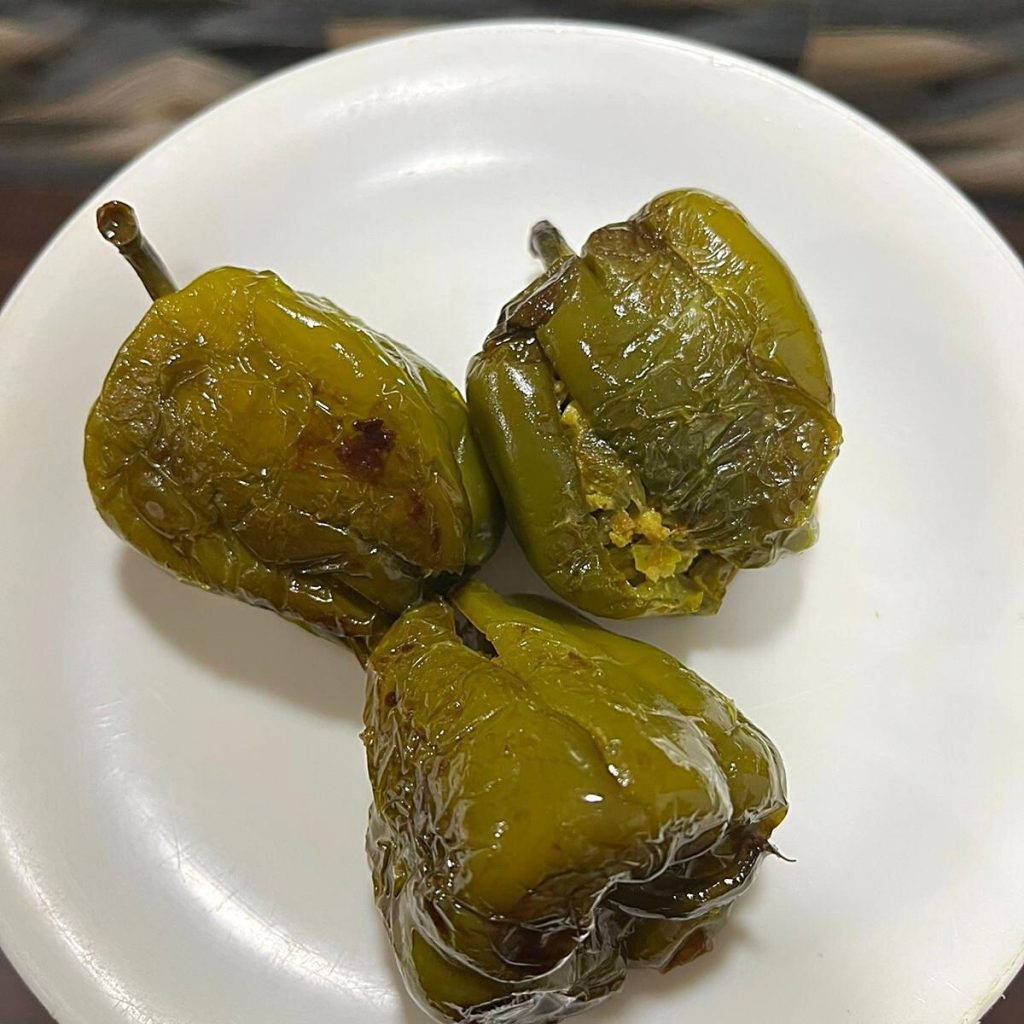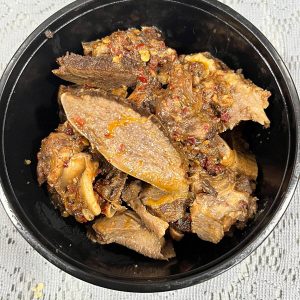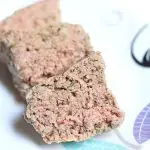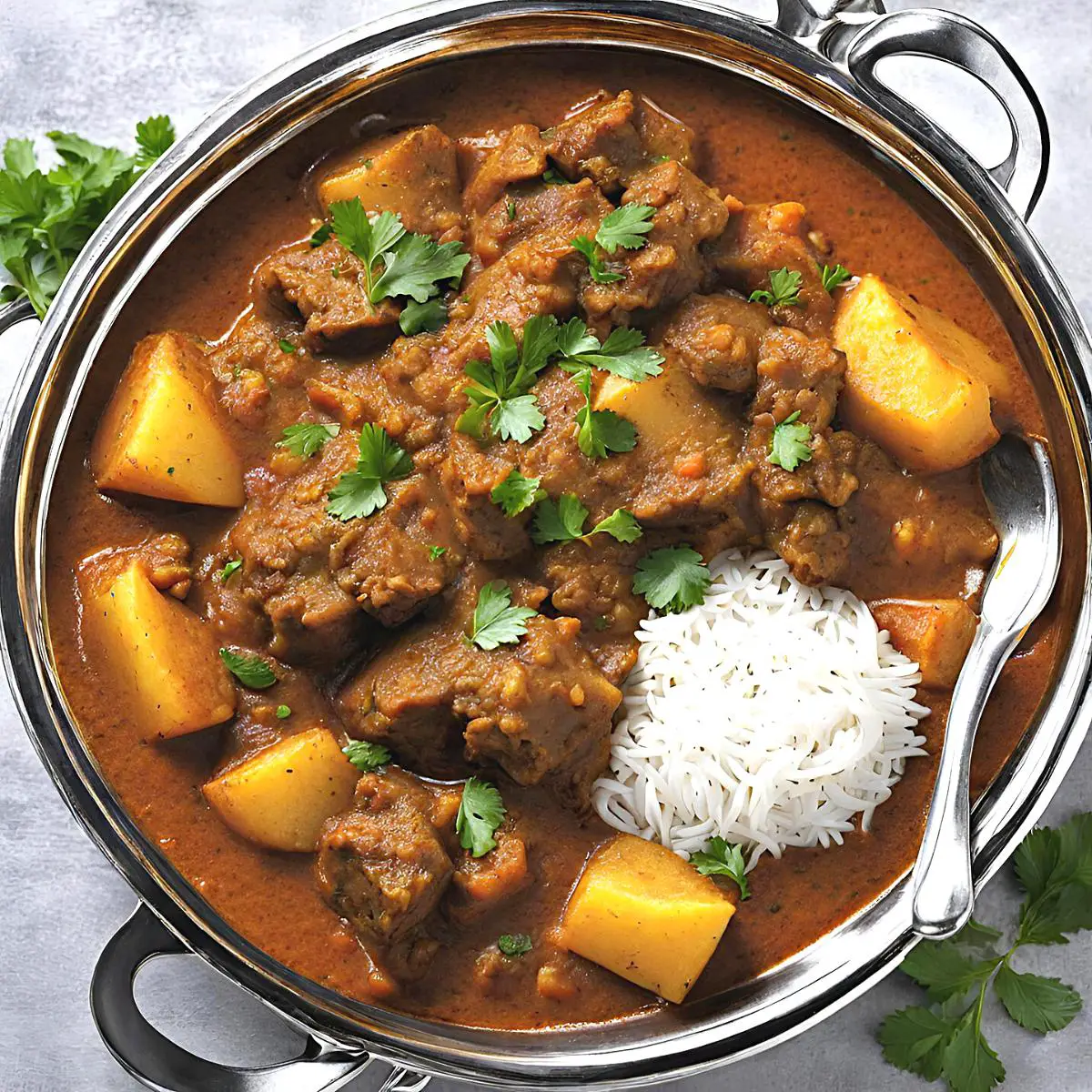Beef Tongue Roast
Are you ready to take your cooking skills to the next level and dazzle your dinner guests with a truly unforgettable dish? Ox and beef tongue roast is a traditional dish that is easy to make and impressive to serve.

If you remember growing up only moms and grandmoms cooked recipes with tongues, livers, and other offals. But, not anymore. These days with detailed recipes such as this even a novice can make this easy peasy tongue roast.
To truly master the art of beef tongue roast, it’s important to understand the unique qualities and flavors of this intriguing cut of meat. Often overlooked in favor of more traditional cuts, beef tongue is a hidden gem waiting to be discovered. With its tender texture and rich flavor, it promises to add a new dimension to your culinary repertoire.
Understanding beef tongue: A unique and delicious cut
Beef tongue, as the name suggests, is the tongue muscle of a cow. It is a versatile cut that can be prepared in various ways, but its true potential shines when it comes to roasting. The meat is incredibly tender and moist, with a melt-in-your-mouth quality that is unmatched by other cuts.
- One of the reasons beef tongue is such a prized ingredient is the depth of flavor it offers. It has a bold, meaty, and slightly sweet taste, making it a real treat for the taste buds. When cooked properly, the flavors of the beef tongue blend harmoniously, resulting in a rich, savory, and incredibly satisfying roast.
- Preparing beef tongue requires time and effort, but the result is well worth it. Before getting started, it’s essential to properly clean and trim the tongue to remove any excess fat or connective tissue. This will ensure a more enjoyable dining experience and allow the flavors of the meat to shine through.
- By understanding the unique qualities of beef tongue and taking the time to prepare it correctly, you can unlock a world of culinary possibilities. Whether you choose to roast it, braise it, or even use it in tacos or sandwiches, beef tongue is a versatile and delicious cut that will impress even the most discerning palates.
Preparing the beef tongue: Step-by-step guide
- First, begin by purchasing a fresh beef tongue from a reputable butcher or specialty meat market. Look for a tongue that is firm and plump, with a healthy pink color and minimal amounts of fat. It’s important to choose a high-quality tongue to ensure the best flavor and texture in your final dish.
- Once you have your tongue, it’s time to prepare it for cooking. Start by rinsing the tongue under cold water to remove any surface impurities. Next, fill a large pot with enough water to fully submerge the tongue and bring it to a gentle boil. This initial boiling process will help remove any residual blood and impurities that may be present.
- After the water comes to a boil, carefully add the tongue and let it simmer for about two to three minutes. This blanching step helps loosen the outer layer of skin, making it easier to peel off later.
- Using a pair of tongs, carefully remove the tongue from the pot and transfer it to a cutting board. Allow it to cool slightly before proceeding to the next step.
- Once the tongue is cool enough to handle, use a sharp knife to carefully remove the outer layer of skin. This should come off relatively easily, revealing the tender meat underneath.
- After peeling off the skin, take a moment to inspect the tongue for any remaining fat or gristle that might detract from the final dish. Trim away any excess fat or tough connective tissue to ensure a more enjoyable eating experience.
- Now that your beef tongue is clean and ready to cook, you can proceed to the next section on how to clean it before cooking. With this step-by-step guide, you’ll be well on your way to mastering the art of beef tongue roast and creating a culinary masterpiece that will tantalize taste buds and impress even the most discerning diners.,

Tips for making beef tongue pot roast:
Before you start cooking your beef tongue pot roast, it’s important to take a few key steps to ensure the best results. By following these tips, you’ll be able to enhance the flavor and tenderness of your dish, transforming it into a mouthwatering masterpiece.
- Firstly, make sure to season the beef tongue with salt and pepper before cooking. This will help to bring out the natural flavors of the meat and add a delicious savory element. Don’t be too shy with the seasoning – the beef tongue can handle a generous amount, which will contribute to a more flavorful end result.
- Next, it’s important to sear the beef tongue before slow cooking it. Searing creates a beautiful crust on the outside of the meat, locking in the flavors and juices. Heat a large skillet over medium-high heat and add a small amount of oil. Once the oil is hot, carefully place the beef tongue in the skillet and let it sear for a few minutes on each side until it develops a nice brown color. This step is crucial for achieving a rich and caramelized flavor in your pot roast.
- Once the beef tongue is seared, it’s time to transfer it to your slow cooker or Dutch oven. Add in your choice of vegetables, such as carrots, onions, and celery, to enhance the flavors and provide a fragrant aroma. These vegetables will not only contribute to the overall taste of the dish but also serve as a natural bed to elevate the beef tongue while it cooks.
- To ensure optimal tenderness, it’s recommended to cook the beef tongue on low heat for several hours. This slow and gentle cooking method allows the collagen in the meat to break down, resulting in a tender and succulent roast. Keep an eye on the roast during the cooking process, ensuring that there is enough liquid to prevent it from drying out. You can use beef broth, red wine, or a combination of both to add depth and complexity to the flavors.
- As the beef tongue simmers away, take the opportunity to prepare any additional sides or sauces that will complement the flavors of the roast. Whether it’s a tangy horseradish sauce or a rich and velvety gravy, these accompaniments will elevate your beef tongue pot roast to new heights.

Seasoning the beef tongue: Enhancing flavor and tenderness
- One key step in enhancing the flavor of the beef tongue is creating a robust and well-rounded seasoning blend. While salt and pepper are the foundation of most dishes, don’t be afraid to experiment with additional spices and herbs to create a unique flavor profile. Consider adding a touch of garlic powder for a savory punch, or perhaps a sprinkle of smoked paprika for a subtle smokiness.
- Incorporating acid into the seasoning can also play a significant role in enhancing the flavor of the tongue. Fresh citrus juice, such as lemon or lime, can brighten up the richness of the meat and provide a refreshing contrast. Alternatively, a splash of vinegar can add a tangy kick that cuts through the richness.
- Another crucial aspect of seasoning is allowing enough time for the flavors to penetrate the meat. After applying the seasoning blend, let the beef tongue sit for at least an hour, or even overnight if possible. This will allow the flavors to seep into the meat, ensuring a more pronounced taste throughout.
- In addition to enhancing flavor, the seasoning process can also contribute to the tenderness of the beef tongue. Salt, in particular, helps to break down tough muscle fibers and tenderize the meat. Sprinkle a generous amount of salt on the tongue, paying special attention to any thicker parts or areas that may require some extra tenderness.

Cooking techniques for the perfect beef tongue roast:
Mastering the art of a beef tongue roast requires more than just seasoning the meat. It also involves understanding the cooking techniques that will result in a tender and flavorful dish. Here are some key techniques to keep in mind as you embark on your culinary journey:
- Braising: Braising is a cooking method that involves searing the meat at high heat to develop a rich crust, and then simmering it slowly in a flavorful liquid. This technique is particularly well-suited for beef tongue, as it helps break down the tough muscle fibers and infuse the meat with delicious flavors. Braising also ensures that the roast remains moist and succulent throughout the cooking process.
- Low and slow: When it comes to beef tongue roast, patience is key. Slow cooking at a low temperature allows the meat to become tender and juicy, resulting in a melt-in-your-mouth texture. You can cook on the stovetop on low for 2 to 3 hours or you can also cook it in the oven for 3 to 4 hours. Set your oven temperature to around 300°F (150°C) and let the roast cook for several hours until it reaches the desired tenderness. Remember, good things come to those who wait!
- Resting: Once your beef tongue roast is cooked to perfection, resist the temptation to carve into it immediately. Instead, allow the roast to rest for a few minutes before slicing. This resting period allows the meat to reabsorb its juices, ensuring that every slice is moist and flavorful.
- Indian Beef Kebabs
- Beef Shanks Curry Nihari
- Pork Vindaloo
- Pork Sarpatel or Sorpotel
- Ground Beef Potato Chops
Frequently asked questions
While beef tongue may seem intimidating at first, it’s actually quite simple to prepare once you understand the basics. The key is to properly clean the tongue before cooking and then cook it low and slow to achieve tender and flavorful results. With some patience and practice, you’ll be able to master the art of beef tongue roast.
Before cooking, the beef tongue needs to be thoroughly cleaned. Start by removing any excess fat or skin from the tongue’s surface. Wash it under cold running water, making sure to scrub away any dirt or debris. Some recipes also recommend blanching the tongue in boiling water for a few minutes to further remove impurities. Once cleaned, trim any excess fat or cartilage if desired.
Beef tongue does have a distinct flavor, but it is not overpowering. When cooked properly, the taste is rich and beefy, with hints of natural sweetness. The seasoning and cooking techniques used can also influence the overall flavor profile. If you enjoy the taste of beef, you’ll likely appreciate the unique flavor of beef tongue roast.
The cooking time for beef tongue roast depends on its size and the cooking method used. Generally, it takes about 2 to 4 hours to cook a beef tongue roast in a low-temperature oven or slow cooker. To ensure that it is cooked to perfection, use a meat thermometer to check for an internal temperature of 160°F (71°C).
Absolutely! Beef tongue roast can be used in various culinary creations. After cooking and slicing the roast, you can incorporate it into sandwiches, tacos, soups, stews, or salads. Its tender texture and rich flavor make it a versatile ingredient that adds depth to any dish.
Pin this and other East-Indian Recipes on Pinterest here. Don’t forget to like and Follow for more recipes.

Ingredients
- 1 kg Beef or Ox tongue about 2 to 3 pounds
- 2 tbsp Ghee
- 2 tbsp Cooking oil
- 1 large Onion thinly sliced
- 5 large Garlic cloves minced
- 1 inch Fresh ginger finely grated
- 2 to 3 whole Green chilies slit lengthwise
- 1 tsp red chili flakes adjust to taste
- 2 tbsp Coriander seeds
- 1 tbsp Cumin seeds
- 1 tbsp Whole black pepper corns
- 2 Bay leaves
- 1 Cinnamon stick
- 3 Cardamom pods slightly crushed
- 5 Cloves
- 1 large Lemon juiced
- 1 tsp Salt to taste
- 1 tsp Black pepper powder freshly ground, to taste
- 1 – 2 cups Water or beef broth as needed
Instructions
- Prepare tongue – Start by cleaning the beef tongue thoroughly. Remove any excess fat or membranes. Blanch in boiling water for 2 to 3 minutes and cool slightly. Peel the skin and pat dry with a paper towel. Set aside.1 kg Beef or Ox tongue
- Braise – Heat the ghee and oil over medium-high heat in a large, heavy-bottomed pot. Once hot, add the beef tongue and sear it until it's browned on all sides. This will seal the flavors and give the tongue a nice caramelized exterior. Remove the tongue and set aside.Pro tip – make sure the tongue is dry, not wet otherwise, it will stew rather than sear on all sides.2 tbsp Ghee, 2 tbsp Cooking oil
- Sauté – In the same pot, reduce the heat to medium. Add the sliced onions and sauté until they turn translucent and slightly golden. Add the minced garlic, grated ginger, and green chilies. Continue to sauté for another 2-3 minutes until aromatic. Add the red chili flakes, coriander seeds, cumin seeds, bay leaves, cinnamon sticks, cardamom pods, and cloves. Sauté for 2-3 minutes, allowing the spices to release their aromas.1 large Onion, 5 large Garlic cloves, 1 inch Fresh ginger, 2 to 3 whole Green chilies, 1 tsp red chili flakes, 2 tbsp Coriander seeds, 1 tbsp Cumin seeds, 1 tbsp Whole black pepper corns, 2 Bay leaves, 1 Cinnamon stick, 3 Cardamom pods, 5 Cloves
- Cook – Return the braised tongue to the pot. Add enough water or beef broth to cover at least half of the tongue. Season with salt and freshly ground black pepper according to taste.1 tsp Salt, 1 tsp Black pepper powder, 1 – 2 cups Water or beef broth as needed
- Simmer – Bring the mixture to a boil, reduce the heat to low, cover the pot, and let it simmer for 2 to 3 hours. The tongue should become tender and easily pierced with a fork when it's done.
- Remove – Once the tongue is tender, remove it from the pot and set it aside to rest for about 10 minutes. Then, slice it into your desired thickness.
- Sauce – Meanwhile, bring the sauce in the pot to a simmer until it thickens slightly. Add the lemon juice and stir well. Adjust seasoning if necessary. return the cooked tongue slices back to the pan and combine well.1 large Lemon
- Serve – This dish pairs well with steamed rice, mashed potatoes, or any bread you choose. Leftovers are great in sandwiches, too.
About Videos – most recipes has two videos – a quick version in the post & longer detailed version on this recipe card. Please do subscribe to my channel if you like my videos
Nutrition Information
The nutrition information and metric conversion are calculated automatically. I cannot guarantee its accuracy. If this data is important to you please verify with your trusted nutrition calculator. Thank you





















